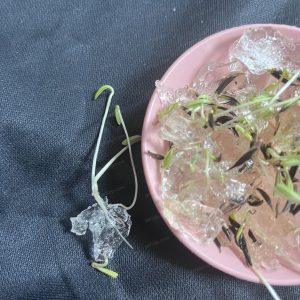Exploring Potassium Polyacrylate: Unveiling Its Water-Absorbing Capabilities
Potassium polyacrylate is a superabsorbent polymer known for its remarkable ability to absorb and retain water. This powerful material is utilized in a variety of fields, including agriculture and horticulture, to enhance water retention in soil. Let’s dive into the science behind potassium polyacrylate, how it works, its production process, and its longevity.

How Does Potassium Polyacrylate Absorb Water?
The water-absorbing ability of potassium polyacrylate is due to its unique molecular structure. As a polymer, potassium polyacrylate is composed of long chains of repeating units derived from acrylic acid, with potassium ions integrated into the structure.
When potassium polyacrylate comes into contact with water, the water molecules are attracted to the potassium ions and the hydrophilic parts of the polymer. The potassium ions dissociate from the polymer chain, creating negatively charged sites along the polymer backbone. These negatively charged sites attract the polar water molecules, which leads to the polymer swelling as it absorbs water. This transformation turns the dry polymer into a gel-like substance capable of holding a significant amount of water.
How Does Potassium Polyacrylate Work?
The functioning of potassium polyacrylate can be broken down into a few key steps:
- Initial Contact: When dry potassium polyacrylate meets water, the water molecules are attracted to the potassium ions and the hydrophilic (water-attracting) parts of the polymer chain.
- Absorption and Swelling: Water molecules penetrate the polymer structure, adhering to the negatively charged sites. This causes the polymer chains to expand, creating a gel-like consistency as they absorb water.
- Equilibrium State: The polymer continues to absorb water until an equilibrium is reached, where the osmotic pressure driving water into the polymer is balanced by the elastic forces of the swollen polymer network trying to revert to its original state.
How Is Potassium Polyacrylate Made?
The production of potassium polyacrylate involves several steps:
- Polymerization: The process starts with the polymerization of acrylic acid, where monomers (single units) of acrylic acid are combined into long polymer chains through free radical polymerization.
- Neutralization: The acrylic acid polymer is then neutralized with potassium hydroxide to convert it into potassium polyacrylate. This step introduces the potassium ions that are crucial for the polymer’s water-absorbing properties.
- Drying and Grinding: The resulting potassium polyacrylate gel is dried to remove excess water and then ground into a powder or granule form, making it easier to handle and use in various applications.
How Long Does Potassium Polyacrylate Last?
The longevity of potassium polyacrylate largely depends on its specific application and environmental conditions. In a dry, controlled environment, potassium polyacrylate can last indefinitely, maintaining its water-absorbing capabilities. However, once it has absorbed water and formed a gel, its stability can vary:
- In Agricultural and Horticultural Applications: When used in soil to retain moisture, potassium polyacrylate can last for several months to a few years. Its longevity is influenced by factors such as soil composition, temperature, and microbial activity.
- Environmental Degradation: Over time, potassium polyacrylate can degrade due to exposure to ultraviolet light, heat, and microbial activity. This degradation process can take several months to years, depending on environmental conditions.
Conclusion
Potassium polyacrylate is an exceptional material with unique water-absorbing properties that make it invaluable in various applications, particularly in agriculture and horticulture. Its ability to absorb and retain water is due to its polymer structure and the presence of potassium ions that attract and hold water molecules. The production process involves polymerization and neutralization of acrylic acid, followed by drying and grinding. While potassium polyacrylate can last indefinitely in a dry state, its longevity in practical applications varies based on environmental conditions and usage.
Whether used to enhance soil moisture retention or in other applications, potassium polyacrylate demonstrates the incredible potential of polymer science in addressing water management challenges.

